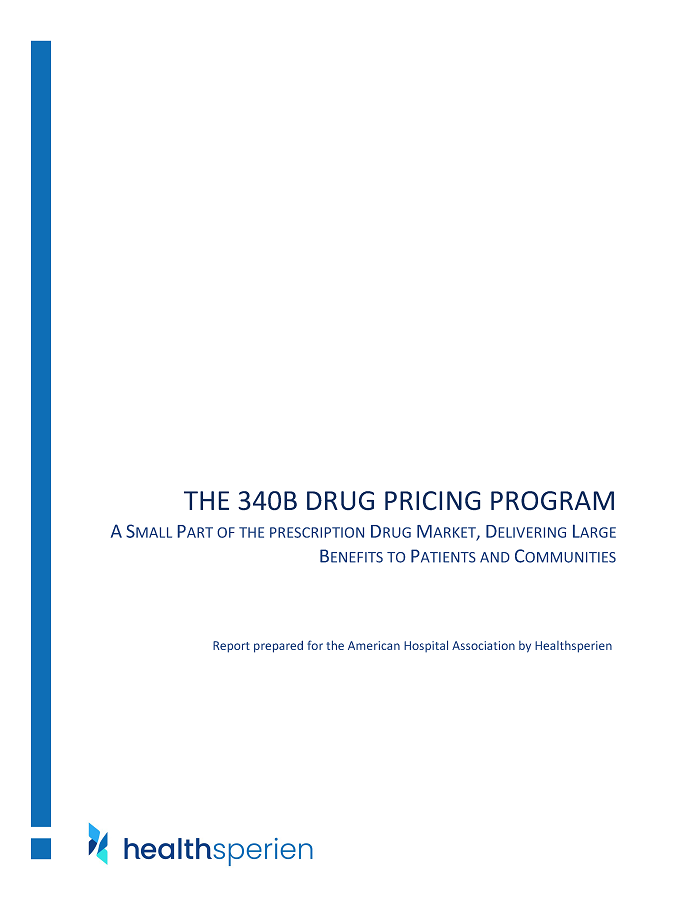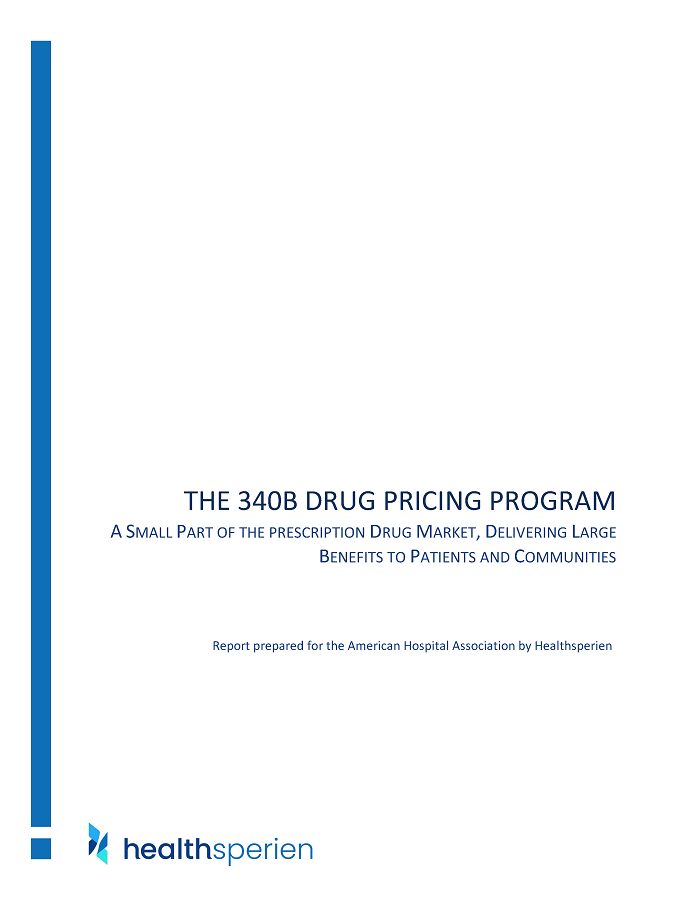

The 340B Drug Pricing Program
A Small Part of the Prescription Drug Market, Delivering Large Benefits to Patients and Communities
Report prepared for the American Hospital Association by Healthsperien
Executive Summary
The 340B Drug Pricing Program allows hospitals caring for large numbers of underserved patients to stretch scarce federal resources and provide more comprehensive care by requiring drug companies to offer discounted prices on certain outpatient drugs. As the program has grown to cover more eligible providers, some policymakers and industry experts have raised questions about the ongoing benefit to patients and the impact on drug companies and taxpayers. This report offers new insights into this issue with an analysis of the impact of the evolving program on drug company revenues and benefits to patients.
The report’s key findings include:
- The estimated amount of 340B discounts to eligible hospitals is a small share of drug company revenues.
- Drug companies provided an estimated $46.5 billion in discounts to 340B hospitals in 2022—roughly 3.1 percent of global revenues and 7 percent of U.S. revenues that year.
- Revenue growth for drug companies was an estimated $347 billion and the U.S. drug market grew by $331 billion between 2017 and 2022, while the discounts provided to 340B hospitals grew by $30 billion. Therefore, the scale at which the discounts drug companies are providing to 340B hospitals pales in comparison to their revenue growth and the growth of the U.S. drug market.
- Forces shaping the 340B program and its scope include a mix of factors.
- Direct impacts on the scope of the 340B program include legislation that expanded program eligibility to
- Indirect impacts on the program include policy decisions that shift care delivery from inpatient to outpatient settings and changes to patent and extended exclusivity policies for drug companies.
- Other forces shaping the program include increasing the use of drugs, including both specialty drugs and medical advances that rely on drugs over other interventions, and sharply rising drug prices.
- Expansions of the 340B program increased access to care for underserved patients and their communities. Estimated increases in the amount of 340B hospitals’ community benefits have outpaced the growth in 340B discounts, consistent with the Congressional intent of the program. This outsized impact with direct benefits to patients comes at no additional cost to taxpayers and accounts for a small share of drug company revenues.


